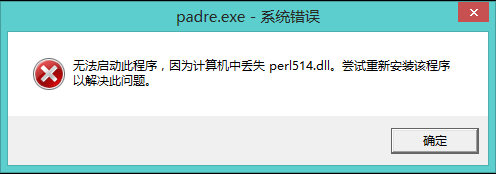printf is powerer to control the outputs,it's used with a format string,and a list of elements.
printf "Hello,$s; your password expires in %d days!\n",$user,$days_to_die;
printf "in %d days!\n",17.85; # in 17 days!
printf "in %d days!\n",17.85; # in 17 days!
Format string has some kind of 'conversion',each format string starts with '%' and ends with a character.
The number of elements and format strings must be the same,otherwise printf doesn't work.
The number of elements and format strings must be the same,otherwise printf doesn't work.
%d gets integer number,like %d ... 17.85 is 17.
%s gets characters,-15 means align by left.
%f gets fload number.
%s gets characters,-15 means align by left.
%f gets fload number.
printf "%6d\n",42;
printf "%2d\n",2e3+1.95;
printf "%15s\n","wilma";
printf "%-15s\n","flintstone";
printf "%2d\n",2e3+1.95;
printf "%15s\n","wilma";
printf "%-15s\n","flintstone";
printf "%12f\n",6*7+2/3;
printf "%12.3f\n",6*7+2/3;
printf "%12.0f\n",6*7+2/3;
printf "%12.3f\n",6*7+2/3;
printf "%12.0f\n",6*7+2/3;
$ ./printf.pl
Hello,Larry; your password expires in 5 days!
in 17 days!
42
2001
wilma
flintstone
42.666667
42.667
43
Hello,Larry; your password expires in 5 days!
in 17 days!
42
2001
wilma
flintstone
42.666667
42.667
43
If you want output a '%',use '%%','\%' don't work.
printf "Monthly interest rate: %.2f%%\n",5.25/12; # Monthly interest rate: 0.44%
Filehandle is the name of I/O connection in Perl program,is the bridge between perl and outside world.
It's name of connection,but not name of file.
It's name of connection,but not name of file.
Perl has six buildin filehandle: STDIN,STDOUT,STDERR,DATA,ARGV,ARGVOUT
STDIN=standard input
STDOUT=standard output
STDERR=standard error
STDIN=standard input
STDOUT=standard output
STDERR=standard error
If you need other filehandles,use operater 'open'.
open CONfig,"dino"; # input from dino
open CONfig,"<dino"; # input from dino
open bedROCK,">fred"; # output to fred,cover the original contents of fred
open LOG,">>logile"; # append to fred
open CONfig,"<dino"; # input from dino
open bedROCK,">fred"; # output to fred,cover the original contents of fred
open LOG,">>logile"; # append to fred
The upper-case are filehandles,the lower-case are filenames.
When opening a filehandle,the default action is get input from file,so the first two has same results.
When opening a filehandle,the default action is get input from file,so the first two has same results.
We can use expressions with filenames.
my $selected_output="my_output";
open LOG,"> $selected_output"; # note the space after '>'
open LOG,"> $selected_output"; # note the space after '>'
Use 'close' to close a filehandle.
close bedROCK;
close bedROCK;
if(!open LOG,">>logfile"){
die "Cannot create logfile:$!";
}
'die' will end program when 'open' fails,and tell you it cannot open logfile.
$! is the system error messages that shell throws out.
die "Cannot create logfile:$!";
}
'die' will end program when 'open' fails,and tell you it cannot open logfile.
$! is the system error messages that shell throws out.
$ ./die_open.pl
Cannot create logfile:Permission denied at ./die_open.pl line 4.
Cannot create logfile:Permission denied at ./die_open.pl line 4.
If you don't want the program name,just put a "\n" at the end.
$ cat die_open.pl
#!/usr/bin/perl
#!/usr/bin/perl
if(!open LOG,">>logfile"){
die "Cannot create logfile:$!\n";
}
$ ./die_open.pl
Cannot create logfile:Permission denied
die "Cannot create logfile:$!\n";
}
$ ./die_open.pl
Cannot create logfile:Permission denied
After a filehandler opens,it can be used as STDIN to get input lines.
if(!open PASSWD,"/etc/passwd"){
die "How did you get logged in?($!)";
}
while(<PASSWD>){
chomp;
print "$_\n";
}
$ ./die_open.pl
root:x:0:0:RHEL5:/root:/bin/bash
bin:x:1:1:bin:/bin:/sbin/nologin
daemon:x:2:2:daemon:/sbin:/sbin/nologin
adm:x:3:4:adm:/var/adm:/sbin/nologin
......
die "How did you get logged in?($!)";
}
while(<PASSWD>){
chomp;
print "$_\n";
}
$ ./die_open.pl
root:x:0:0:RHEL5:/root:/bin/bash
bin:x:1:1:bin:/bin:/sbin/nologin
daemon:x:2:2:daemon:/sbin:/sbin/nologin
adm:x:3:4:adm:/var/adm:/sbin/nologin
......
Exercises:
1. Write a program,print the reversed lines from input.
#!/usr/bin/perl
while(<>){
push @lines,$_;
}
@lines=reverse @lines;
foreach(@lines){
print $_;
}
###########################################
2. Write a program,user input lines of characters,then print the formatted lines that right align by 20 bits.
#!/usr/bin/perl
print "1234567890" x 7 . "\n";
while(<>){
chomp;
printf "%20s\n",$_;
}
###########################################
3. Modify the above program,let user input the align width.
#!/usr/bin/perl
chomp($width=<STDIN>);
print "1234567890" x $width . "\n";
while(<>){
chomp;
printf "%${width}s\n",$_;
}



